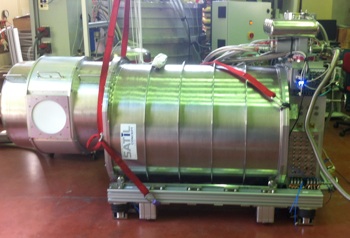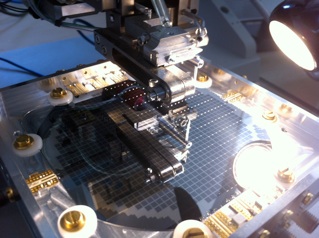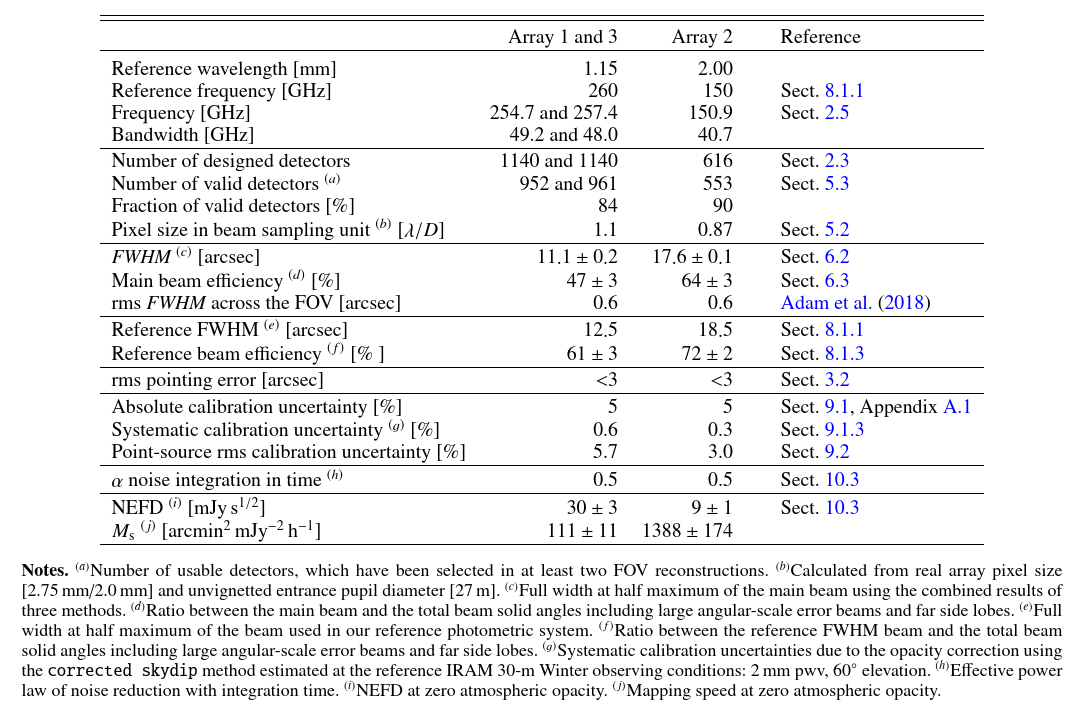Instrument


NIKA2 in a nutshell
The New Iram Kid Array-2 (NIKA2) is a next generation camera for continuum millimetre wave observations currently being developed by the NIKA2 consortium. This camera will be installed at the focal plane of the IRAM 30m telescope in Sierra Nevada (Spain) in 2015, replacing the already successful NIKA prototype that opened to external observers in February 2014. With respect to the prototype, NIKA2 will represent an important step forward, thanks to major improvements in all of its key components.
Detectors :
The NIKA2 focal plane will be fully sampled using Kinetic Inductance Detectors (KID), a novel superconducting detector technology that provides at the same time high sensitivity and ease of multiplexing. Dual color imaging will be obtained thanks to the simultaneous readout of a 1000 pixels array at 2mm and 2x2000 pixels arrays at 1.2mm. The two arrays at 1.2mm allow the measurement of the linear polarization in this band. A series of dedicated electronics boards named NIKEL will be used to acquire the astronomical signal. Each of them is capable of exciting and reading out up to 400 kids simultaneously using one single coaxial line. The goal point source sensitivities are around 10 and 15 mJy·sqrt(s) at 2mm and 1.2mm respectively.
Cryostat :
To cool down the detectors to their ideal working temperature ( 100mK) a dedicated cryostat has been designed and fabricated. It is based on two Pulse Tube coolers and a closed cycle 3He/4He dilution refrigerator. Its impressive dimensions (2.3m length and 1m diameter, for a total weight approaching one ton) are dictated by the space needed to host the arrays and the re-imaging optics, and for splitting the optical beam to illuminate each one of the three arrays. The cryostat is currently under test, and has already been successfully cooled down to below 100mK in May 2014.
Optics :
The optics chain has been designed in order to have a much larger Field of View (FoV), which is 6.5 arcmin in diameter. This is fully sampled at 0.75 F*Lambda. A dichroic is used to split the two optical bands, and a wire grid further splits the 1mm band to divide its two perpendicular polarizations. In front of each array, a dedicated optical filter is used to accurately define the bands.
Chronology :
NIKA2 was commissioned in 2015-2016 (Adam et al. 2018, Perotto et al. 2020) and Large Guaranteed Time Programs, as well as open time proposals, have proceeded flawlessly since. The combination of arrays of state-of-the-art detectors with the high resolution and large FoV provided by the IRAM 30m telescope, makes NIKA2 a unique tool for astronomers worldwide. The whole data have been acquired (as of March 2023) for the four Intensity Large Programs. Publications of the results are ongoing in 2023-2024. All information is provided on this IRAM NIKA2 website.



